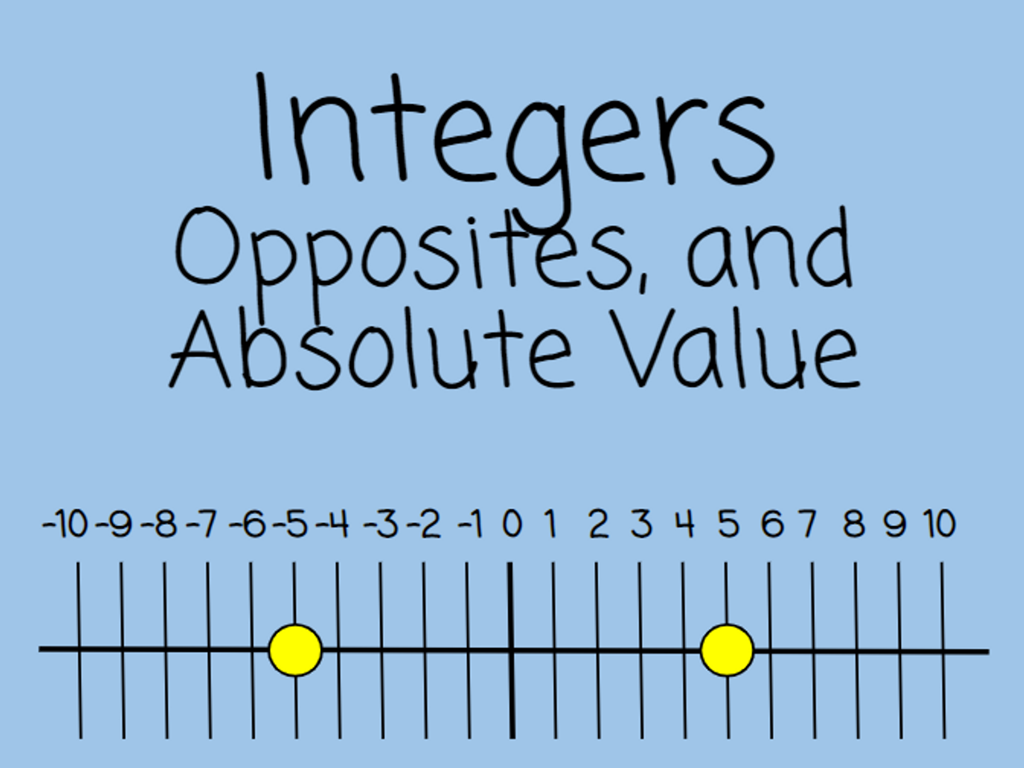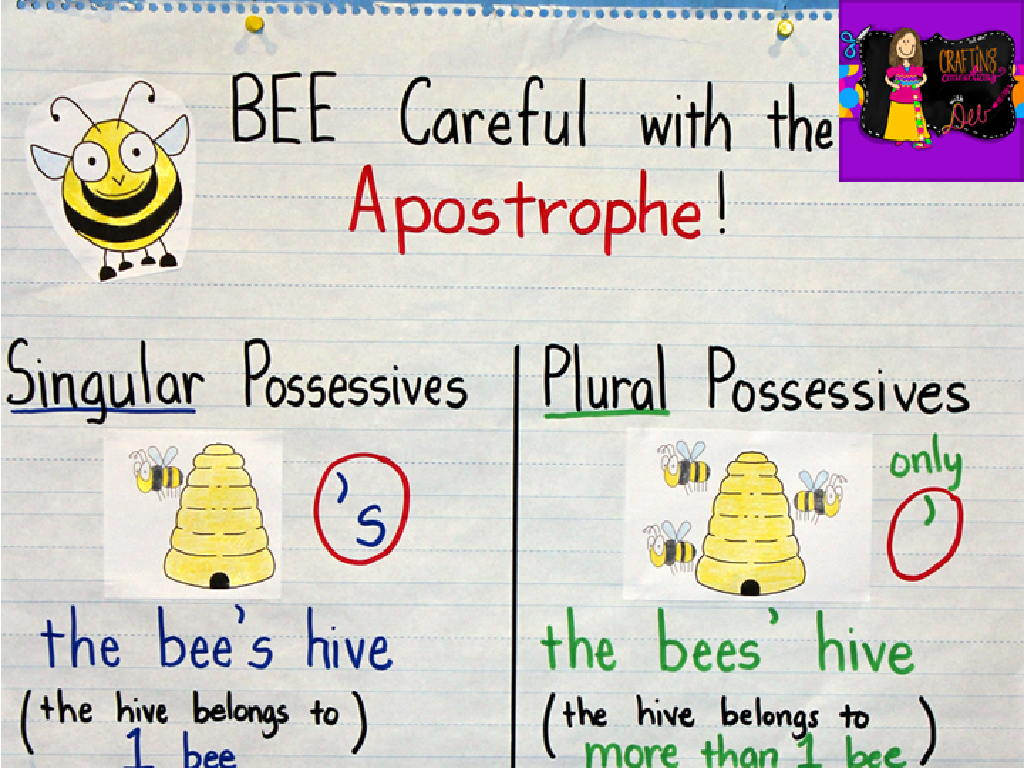Contractions With "Not"
Subject: Language arts
Grade: Fifth grade
Topic: Contractions
Please LOG IN to download the presentation. Access is available to registered users only.
View More Content
Exploring Contractions with ‘not’
– Understanding contractions
– A contraction combines two words into one, like ‘do not’ to ‘don’t’
– Purpose of using contractions
– They make speaking & writing quicker and more natural
– Today’s focus: ‘not’ contractions
– We’ll learn how ‘not’ changes when it’s in a contraction
– Examples: can’t, won’t, shouldn’t
– ‘Cannot’ becomes ‘can’t’, ‘will not’ becomes ‘won’t’, ‘should not’ becomes ‘shouldn’t’
|
This slide introduces the concept of contractions, specifically focusing on those that include the word ‘not’. Begin by explaining what contractions are and why they are commonly used in English to make communication more efficient. Emphasize that contractions are often used in informal writing and speaking. Then, narrow down to contractions with ‘not’, explaining how they are formed by combining a verb with ‘not’ and replacing the ‘o’ with an apostrophe. Provide examples like ‘can’t’ from ‘cannot’, ‘won’t’ from ‘will not’, and ‘shouldn’t’ from ‘should not’. Encourage students to think of other examples and use them in sentences to reinforce their understanding.
Understanding Contractions with ‘Not’
– What is a contraction?
– A contraction combines two words into one.
– Apostrophes in contractions
– An apostrophe replaces omitted letters.
– Examples: can’t, isn’t
– ‘Cannot’ becomes ‘can’t’, ‘is not’ becomes ‘isn’t’.
– Practice forming contractions
– Try turning ‘do not’ into a contraction.
|
This slide introduces the concept of contractions, focusing on those that include the word ‘not’. A contraction is a way to shorten two words into one by using an apostrophe to replace the missing letters. Provide clear examples like ‘can’t’ for ‘cannot’ and ‘isn’t’ for ‘is not’. Encourage students to think of other examples and practice by writing sentences using contractions. This will help them understand how contractions are formed and used in everyday language. Make sure to highlight the importance of the apostrophe and its role in creating contractions.
Contractions with ‘not’
– Making negative contractions
– Combine a verb with ‘not’ to make a contraction
– Examples: isn’t, aren’t, didn’t
– ‘isn’t’ means ‘is not’, ‘aren’t’ means ‘are not’, ‘didn’t’ means ‘did not’
– Apostrophe placement
– The apostrophe shows where letters are left out
– Practice with contractions
– Find contractions in a book or write your own sentences
|
This slide introduces the concept of negative contractions to the students, emphasizing the combination of verbs with ‘not’. Provide clear examples like ‘isn’t’, ‘aren’t’, and ‘didn’t’ to illustrate the concept. Highlight the importance of the apostrophe, explaining that it takes the place of omitted letters. Encourage students to practice by identifying contractions in their reading or by creating their own sentences using contractions. This will help them understand how contractions are formed and used in everyday language.
Let’s Practice Contractions with ‘not’
– Turn ‘do not’ into a contraction
– ‘do not’ becomes ‘don’t’
– Change ‘has not’ to its shorter form
– ‘has not’ is contracted to ‘hasn’t’
– Make ‘would not’ more compact
– ‘would not’ shortens to ‘wouldn’t’
– Share your contractions with the class
|
This slide is an interactive class activity focused on creating contractions with the word ‘not’. Students will practice shortening phrases by combining words and replacing the omitted letters with an apostrophe. For example, ‘do not’ becomes ‘don’t’, where the ‘o’ in ‘not’ is replaced by an apostrophe. Encourage students to say the words out loud to help them understand where the contraction occurs. After practicing with these examples, students can share their contractions with the class. As an extension activity, students can write sentences using these contractions or find other ‘not’ contractions in their reading material. This exercise will help solidify their understanding of how contractions are formed and used in everyday language.
Contractions with ‘Not’: Rules & Exceptions
– Not all words can be contracted
– ‘Will not’ to ‘won’t’: an irregular case
– Unlike ‘cannot’ to ‘can’t’, ‘will not’ changes form
– Use contractions appropriately
– Match contractions with the tone of your writing
– Practice makes perfect
– Try creating contractions in sentences
|
This slide introduces students to the concept that while many words can be contracted, there are exceptions and specific rules to follow. Highlight that ‘will not’ becomes ‘won’t’, which is an irregular contraction and doesn’t follow the typical pattern. Emphasize the importance of using contractions correctly, matching them to the context and tone of the writing. Encourage students to practice by creating their own sentences with contractions, and to be mindful of when it is appropriate to use them, such as in informal writing or speech.
Class Activity: Contraction Surgery
– Learn to create contractions
– ‘Not’ loses an ‘o’ for surgery
– Replace ‘o’ in ‘not’ with an apostrophe
– Pair up for sentence surgery
– Work with a partner to cut and create
– Practice making contractions
– Turn ‘can not’ into ‘can’t’, ‘do not’ into ‘don’t’
|
This interactive class activity is designed to help students understand how contractions are formed by combining words and omitting certain letters. Provide students with sentences that contain the word ‘not’ and have them physically cut out the ‘o’ and replace it with an apostrophe to create a contraction. Encourage them to work in pairs to promote collaboration. Possible sentences for the activity: ‘I can not believe it!’, ‘She will not go to the park.’, ‘They do not want to miss the show.’ After the activity, discuss why contractions are used and how they make sentences shorter and more conversational. This hands-on approach will help solidify the concept of contractions in a fun and memorable way.
Quiz Time: Mastering ‘Not’ Contractions
– Fill in the blanks with correct contractions
– Spot incorrect contractions in sentences
– Identify where ‘isn’t’, ‘aren’t’, ‘wasn’t’, etc., are misused
– Explain the use of correct contractions
– Why do we use ‘can’t’ instead of ‘cannot’ in a sentence?
– Understand ‘not’ contraction rules
– ‘Not’ contractions shorten sentences and add informality
|
This slide is an interactive quiz to reinforce the students’ understanding of contractions with ‘not’. Students will practice using contractions such as ‘isn’t’, ‘aren’t’, ‘wasn’t’, ‘don’t’, ‘doesn’t’, ‘can’t’, etc., by filling in blanks in given sentences. They will also identify and correct sentences where these contractions are used incorrectly, which will help them understand common mistakes to avoid. Additionally, they will explain the rationale behind using contractions, focusing on how they make sentences shorter and more conversational. The teacher should facilitate the activity by providing examples and guiding students through the rules of contraction formation and usage.
Conclusion: The ‘Not’ Contractions & Homework
– Recap: Contractions with ‘not’
– Why use contractions?
– They make writing/speaking more natural & efficient
– Homework: 10 sentences
– Use contractions like isn’t, didn’t, can’t in sentences
– Share your sentences next class
– Be ready to read some of your sentences aloud
|
As we wrap up today’s lesson on contractions with ‘not’, remember that these contractions help us to combine words for a more natural and efficient way of writing and speaking. For homework, I want you to write 10 sentences using contractions such as isn’t, aren’t, didn’t, hasn’t, and can’t. This will help you practice and become more comfortable using them in your daily communication. Be prepared to share some of your sentences in the next class, as we will discuss how these contractions fit into the context and how they can change the tone of your sentences. This exercise will also enhance your understanding of how contractions can be used to convey a more conversational tone in writing.






